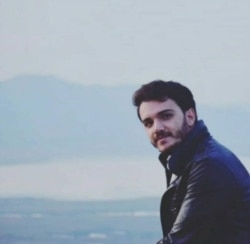Iran social media users in the past few days have shared shocking images of bodies recovered from dams, reservoirs and rivers that allegedly belong to November protesters more than a month after the deadliest unrest in the history of the Islamic Republic.
The images show swollen bodies, many of them with hands tied. Most of the mind-boggling images are from the oil-rich province of Khuzestan and Kurdish-populated areas in the west of the country.
There are unconfirmed reports about the discovery of bodies of several individuals who disappeared during the protests in similar circumstances in rivers and dams in Karaj, Ahwaz, Isfahan and Sanandaj, too.
Khuzestan province has also witnessed several suspicious student deaths. Since Student Day (December 7) bodies of four students of Chamran University in Ahwaz have been found in highly suspicious circumstances.
When asked today if the Judiciary is investigating the suspicious deaths of individuals who were reported missing during the protests and found later with signs of torture in rivers and canals the Judiciary Spokesman Gholam-Hossein Esmaili attributed the reports to “fake death reports”.
“The Judiciary will investigate any suspicious death … but investigating the story of fake death reports, fake statistics, and fake numbers is another tale,” he said.
To weigh these allegations, Radio Farda's Mohammad Zarghami has talked to the uncle of 28-year-old Ershad Rahmanian, whose body was discovered in the Garan Dam reservoir near Marivan, in Kurdistan province.
“Everything indicates that my nephew fell victim to the Islamic republic agents' heavy-handed response to the mid-November unrest in the country,” Kamyar Ahmadi, Ershad’s uncle who has been living in exile in Norway for the past twelve years, says.
"Security and intelligence agents have forced the family to say that Ershad committed suicide by throwing himself into the Garan Dam's reservoir," Ahmadi says and adds that the family cannot believe Ershad took his own life.
"On the day that Ershad disappeared, November 17, Marivan was sizzling with protests. It is hard to imagine that, in the middle of an uprising, all of a sudden Ershad decided to flag a taxi, travel for tens of kilometers to the suburbs to throw himself into the reservoir."
Moreover, Ahmadi says that he is puzzled why the authorities had not released his nephew's body. "If Ershad had indeed committed suicide, why haven’t they released his body yet?" Ahmadi asks.
"When Ershad's family begged the authorities to find him before the discovery of the body, they were assured that Ershad was in the central prison of Sanandaj. Nonetheless, a day later, they denied what they had said."
According to Ahmadi, the authorities also called the family and told them to visit the coroner's office in the city of Sanandaj to identify a newly discovered body. “It was not Ershad's. Finally, the local people discovered Ershad's body in the Garan dam's reservoir and called the police,” he says and adds that the local people who discovered Ershad's body insist that his skull was crushed, and several of his bones were broken.
"Even after the discovery of the body only a second-degree relative was allowed to see the body of Ershad and identify him," Ahmadi says, adding that Ershad's mother has not been allowed to see her son's body. “We are worried that they might bury the body in secret, and in an unknown grave", Ahmadi adds.







